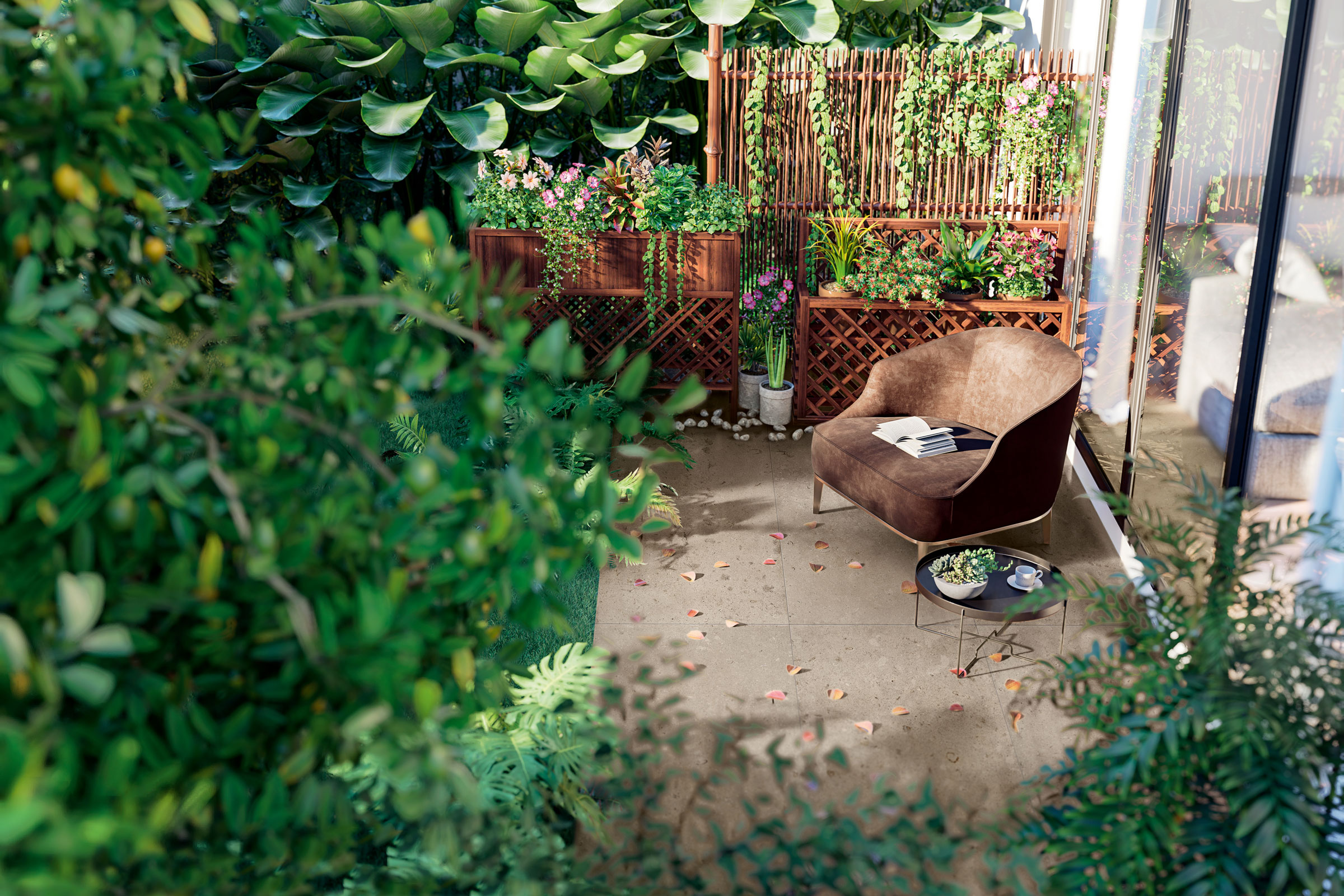Story at a glance:
- Resilience in design reflects the ability of a designed structure, community, or landscape to avoid and/or recover from damage.
- Porcelain tile has multiple advantages when making design selections for outdoor spaces to avoid creating a heat island.
- Porcelain tile can also be used to clad a building in a number of ways.
The continuous impact of climate change surrounds us. It is evident in extended heat waves around the globe, western US drought, European fires, melting glaciers, epic flooding in many locations, and a host of other weather and climate related events, large and small. While most of the interest, legislation, and climate-related planning rightly revolves around the reduction of operating and embodied carbon to prevent a worsening climate, we must also plan to live and thrive in a hotter world in the interim. Resilience to a warming world will be a cornerstone of cutting-edge design for the foreseeable future.
Resilience in design reflects the ability of a designed structure, community, or landscape to avoid and/or recover from damage. In this case climate change induced damage. There is no “one size fits all” approach for resilience in design. Resilient design, like politics, is local. Coastal flooding, desert drought, and urban heat islands are all climate change-induced challenges that each invoke a unique design solution. Moving forward, each aspect of design must both reduce embodied carbon for the future and incorporate resilient design for today.
Resilience to Heatwaves
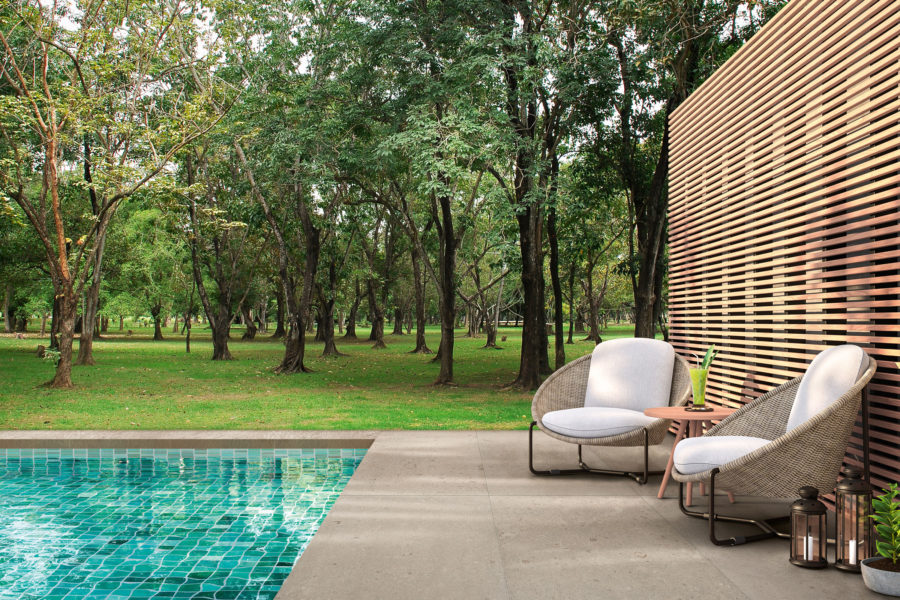
The Lith Collection in Antique Cream. Photo courtesy of MILE®stone
The recurrent and extended heat wave is among the more recognized impacts of climate change. First and foremost, heat waves, especially in the urban environment, bring about excess deaths and human suffering. They also bring about a financial impact from increased cooling demands and other heat induced stresses on the electrical distribution system and other public infrastructure. These human suffering and economic impacts will be with us for the foreseeable future, and therefore demand a response from the designers of the urban space.
The urban, built environment creates heat islands from its concentrations of concrete, steel, and other building materials that absorb solar energy and then radiate that collected energy into the local environment as heat. Design solutions for this problem are complex, multi-faceted undertakings. Properly selected porcelain tile for outdoor applications like patios, pool surrounds, roofing, and building facades can play a role in the amelioration of this phenomenon.
Solar reflectance is the quality of a material to reflect, as opposed to absorb, energy from the sun. Solar reflectance is measured on a scale from 0 to 100 with an increasing value indicating increasing reflectance. Typically darker materials possess a reduced reflectance however this is not universally true. Therefore testing is required to ensure an accurate assessment. Thermal emittance is the ability of a material to release collected heat. Again, this parameter is measured on a scale of 0 to 100 with increasing emittance as the value approaches 100. A material with a small emittance factor can remain cool to the touch if the reflectance value is quite high. So again, testing is recommended to aid in the best material selection. When solar reflectance and thermal emittance are considered together, the result is the Solar Reflectance Index (SRI).
ASTM E1980 provides a standardized methodology for the determination of SRI. Consistent use of such a standardized methodology, ensures that honest comparisons can be made between various materials as part of the design process. ASTM E1980 presents a standardized procedure to calculate an index from reflectance and emittance measurements between 0 and 100% with 100% being the most reflective and least emissive, resulting in the lowest possible contribution to a heat island.
As stated earlier, when considering the minimization of the heat island effect in outdoor spaces, many design choices interact to become the optimal solution of form and function. A good design for such a space could consist of a mix of natural materials such as plantings or wood combined with high SRI porcelain pavers used for walking surfaces. Porcelain tile has multiple advantages as a material when making design selections for outdoor spaces with the intention of preventing a heat island. Porcelain pavers make an excellent walking surface in areas like pool surrounds, parkway paths, patios, and similar outdoor spaces. High SRI porcelain can avoid becoming unsafely hot in areas where barefoot pedestrian traffic is expected in addition to providing adequate friction while wet. Porcelain pavers also come in a large variety of finishes to support any design aesthetic.
A more recent application of porcelain tile is its use as a building cladding material. When high SRI material is used as cladding, not only is the surrounding outdoor space protected from that emitted heat, but the building itself collects less radiant heat, which reduces cooling loads and therefore electricity consumption.
Porcelain tile can be used to clad a building in a couple of ways. Traditionally tiles have been directly adhered to the building using mortar or other adhesives. Recent changes in US building codes have allowed for the use of considerably larger tiles than previously allowed. This change supports a more economic installation and supports a broader range of aesthetic intent.
Another cladding option is the use of a ventilated facade. In this instance the porcelain tile is attached to the building using a clip system that allows for unrestricted ventilation between the facade and the building. This ventilation helps to moderate building temperatures in both hot and cold ambient conditions, again reducing energy requirements for building temperature control. Either application equally supports the minimization of the urban heat island in the space surrounding the building.
Thoughtful use of porcelain tile in the outdoor space can provide a multitude of benefits, from aesthetics, durability, safe footing, and hygiene to reducing heat island effects and HVAC energy demands.
Resilience to Freeze/Thaw Cycles
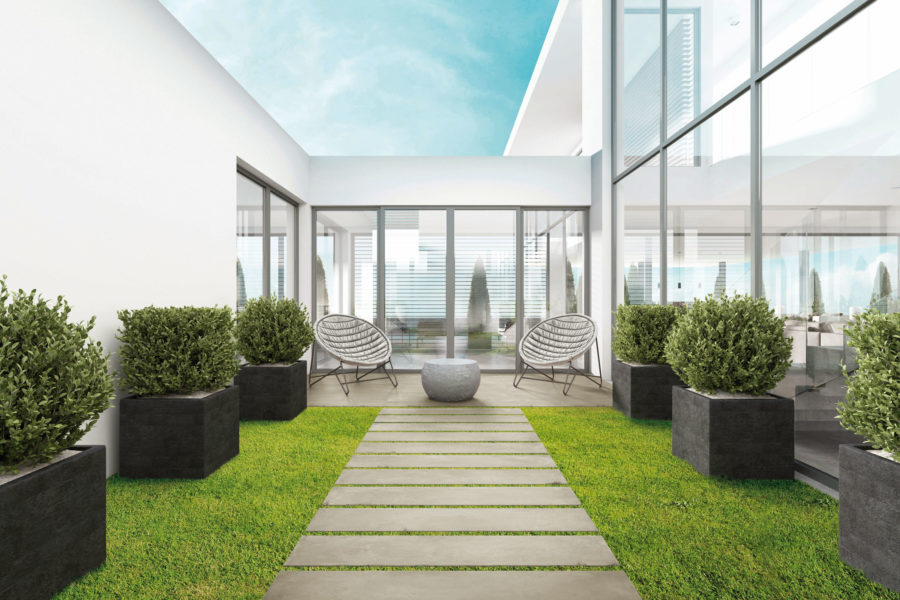
+One in Greige. Photo courtesy of MILE®stone
Another aspect of climate change in the near term is the increased rate of freeze/thaw cycles. As the climate warms locations that were previously frozen essentially all winter will experience broader swings in ambient temperatures, resulting in more freeze/thaw cycles.
Porcelain tile has a long history as a reliable choice for outdoor surfaces subject to freeze/thaw cycles. Its extremely low moisture permeability means it will not absorb moisture that could lead to structural failure in the event of water expansion from freezing. This characteristic of porcelain tile means that when summer returns, tiled walkways, pool surrounds, or garden paths will be in good condition and continue to be suitable for their intended use.
Moderation of temperature swings in the built environment is an important goal for both occupant comfort and reduction of energy demands in a resilient design. An installation of tile, mortar, grout and backerboard is a good tool in this regard. It provides a significant thermal mass which can retain heat and thereby reduce peak heating and cooling demands, helping to moderate temperature swings in the space. This means less work for the HVAC system and more energy savings for the owner.
In addition to cost savings, these energy savings represent a reduction in the operational carbon used by the building during the installed life of the tile system. Intentional design where the tile installation is exposed to southern facing windows to warm it, for example, can maximize the thermal mass benefits of a porcelain tile installation during cold weather.
Resilience to Flooding and Sea Level Rise
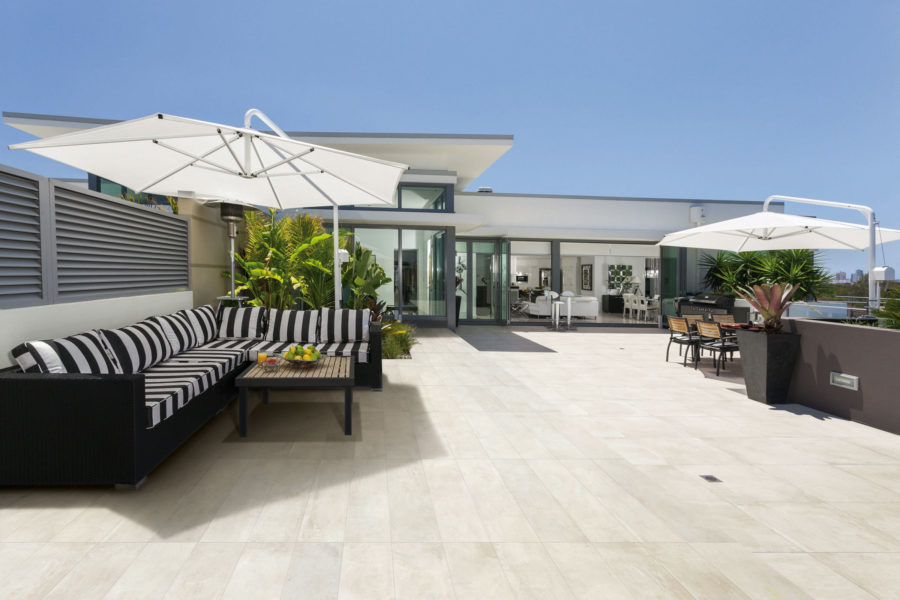
+One in Chalk. Photo courtesy of MILE®stone
The warming climate is causing ever widening fluctuations in weather patterns, resulting in increased frequency of flooding. This stems from the fact that a warm air mass can carry more moisture than a cold one, resulting in more rainfall when that moisture rains out. Inland and coastal flooding are both increasing in frequency and severity.
Community planning to avoid building in flood prone areas is an obvious first choice for mitigation, but cost and land availability means that’s not always possible. If structures are to be built in flood prone areas, resilience is an important design criterion. Porcelain tile can play a small but important role in such a resilient design.
Structures designed to survive flooding obviously cannot be built of wood and traditional sheetrock. Both are porous, prone to mold, and do not maintain structural integrity when inundated. Such structures must be built of relatively impervious materials that can survive inundation with no loss in structural integrity. Easy choices are concrete, steel, and glass. Porcelain tile is an excellent choice for floor and wall covering on a concrete substrate.
Porcelain has a water absorption capacity of less than 0.5% and is regularly installed in wet conditions such as showers, pools, etc. It is not affected by submersion in water and is easily cleaned during recovery activities, supporting a quick return to livable conditions. Additionally, porcelain tile comes in a wide variety of finishes and colors to support any aesthetic choice in the design. Resilient design does not have to be cold and sterile.
Fire Resistance
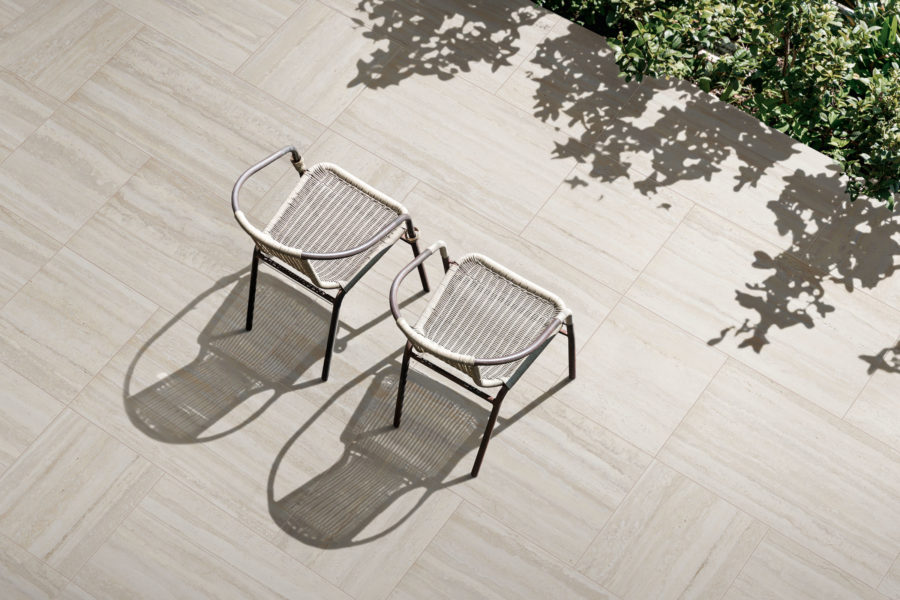
The Lith Collection in Legacy White Matte. Photo courtesy of MILE®stone
Porcelain tile is not flammable. It is made of natural, inorganic materials—rendering it inert at temperatures found in most house or forest fires. When installed properly it contributes to a structure’s fire resistance. This is in addition to cladding’s previously discussed attributes of heat island mitigation and building insulation.
Porcelain cladding used with a fire-resistant roofing material like metal or ceramic and traditional fire mitigation measures like vegetation management produces a resilient structure that is not prone to catch fire from falling embers or contribute to the spread of wildfire.
In some cases porcelain tile used in interior structures can act as a flame retardant, helping to slow the spread of flame and increase the chances of exiting safely. Conversely, many other flooring choices are not only highly flammable; they can also emit harmful volatile organic compounds when exposed to heat and reduce the risk of survival.
Conclusion

+One in Ash. Photo courtesy of MILE®stone
The current emphasis on reducing embodied carbon in the built environment reduces the impact of climate change in the future and is an urgent and necessary effort. However, in the near term, resilient design is required to adapt to an inevitably changing climate.
As a finishing material, porcelain tile has a positive contribution to multiple scenarios. First, by containing the lowest embodied carbon of any available flooring material, porcelain makes a positive contribution to reducing the embodied carbon of the built space. Secondly, it incorporates multiple attributes supportive of resilient design in the areas of heat, flood, and fire. The planet will experience more and greater heat waves, higher and more frequent flooding, along with more frequent and larger wildfires as a predictable part of our future. Resilient design can save lives, allow people to continue their lives unabated, and protect much of the economic engine that sustains civilization.

